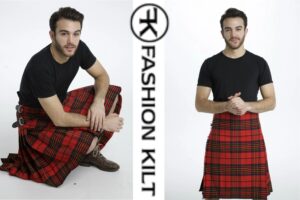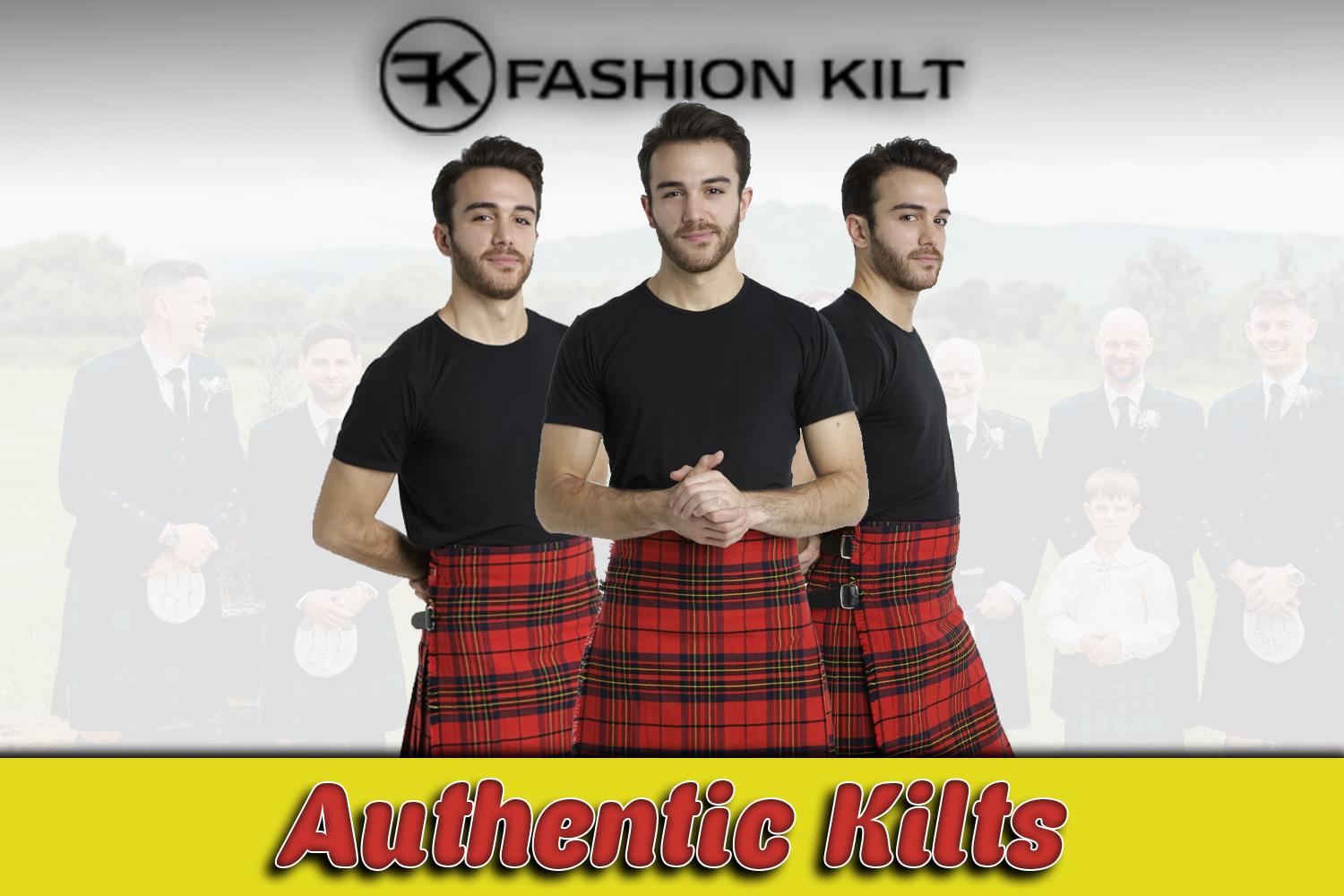The kilt, a quintessential symbol of Scottish heritage and tradition, embodies centuries of cultural significance and sartorial elegance. Whether worn to honor ancestral ties, celebrate special occasions, or simply embrace timeless style, choosing the perfect authentic kilt requires careful consideration and appreciation of its craftsmanship and symbolism. This comprehensive guide aims to equip you with the knowledge and insights needed to navigate the intricacies of kilt selection, from understanding its fundamental components and historical context to exploring modern variations and customization options. Whether you’re a first-time buyer or a seasoned enthusiast, delve into this essential buying guide to discover how to select a kilt that not only fits impeccably but also reflects your personal style and honors the rich traditions of Scottish attire.
Understanding Kilt Basics
In this section, we’ll cover the fundamental components of a kilt, including its structure, materials, and traditional significance. Understanding the basics of a kilt is essential before making a purchase. A traditional kilt consists of several key components: the pleats, which are stitched down at the waistband and hang loosely down the back; the apron, which overlaps the front and is fastened with buckles or straps called “kiltpins”; the waistband, where the kilt is fastened around the waist; and the sporran, a pouch worn around the waist that serves both decorative and practical purposes. Kilts are typically made from wool, which is durable and comfortable, though modern variations may use other materials such as cotton or synthetic blends for different purposes. The kilt’s traditional significance varies depending on the tartan pattern and the wearer’s heritage. Each tartan is associated with specific clans or regions in Scotland, and wearing a particular tartan can signify allegiance to a clan or celebration of Scottish culture. Understanding these elements can help you choose a kilt that not only fits well but also holds personal or cultural significance.
Types of Kilts
Explore the various types of kilts available today, from traditional Scottish kilts to modern adaptations like utility kilts and hybrid kilts Traditional Scottish kilts, often referred to as “Great Kilts” or “Feileadh Mòr,” are typically made from a single piece of tartan fabric that is pleated and wrapped around the wearer’s body. These kilts are known for their intricate pleating and traditional styling, making them a popular choice for formal events and ceremonial occasions. In contrast, modern adaptations of the kilt include utility kilts and hybrid kilts, which blend traditional Scottish styling with contemporary functionality. Utility kilts, for example, feature cargo pockets and additional storage options, making them ideal for outdoor activities and everyday wear. Hybrid kilts combine elements of traditional and modern design, offering versatility and practicality while still honoring the kilt’s cultural heritage. When choosing a kilt type, consider your intended use and personal preferences. Traditional kilts are timeless and elegant, ideal for formal occasions and cultural events. Utility kilts, on the other hand, offer convenience and functionality, making them suitable for activities where additional storage is needed. Hybrid kilts provide a blend of tradition and modernity, catering to individuals who appreciate both heritage and innovation in their attire.
Choosing the Right Tartan
How to select a tartan pattern that resonates with your heritage or personal style preferences. We’ll delve into the significance of different tartans and how to find one that suits you. Choosing the right tartan is a crucial decision when purchasing a kilt, as it reflects your personal or family heritage and can hold significant cultural meaning. Tartans are traditionally associated with Scottish clans, regions, or institutions, each with its own distinctive pattern and colors. Before selecting a tartan, consider researching your family history or cultural background to identify any specific clan affiliations or regional ties. If you have Scottish ancestry, researching your family’s tartan can be a meaningful way to connect with your heritage and honor your ancestors. Many tartans are associated with specific clans or surnames, making it possible to find a tartan that represents your family lineage. Alternatively, you may choose a tartan based on personal preference, selecting a pattern and color scheme that resonates with your style and aesthetic preferences.
Fabric and Quality
What to look for in terms of fabric quality, thread count, and durability. Understanding different fabric options and their suitability for various occasions.The quality of the fabric is essential when choosing an authentic kilt, as it affects both the comfort and durability of the garment. Traditional kilts are typically made from wool, which is prized for its warmth, breathability, and natural water-resistance. Wool kilts are available in various weights, ranging from lightweight fabrics suitable for warm weather to heavy-duty fabrics ideal for cold climates and outdoor activities. In addition to wool, modern kilts may be made from cotton, polyester, or synthetic blends, offering different advantages in terms of comfort, ease of care, and affordability. When selecting a fabric, consider factors such as thread count, weave quality, and fabric density, as these can impact the overall look and feel of the kilt. Quality craftsmanship is also important when assessing the durability of a kilt. Look for well-constructed seams, securely stitched pleats, and reinforced waistbands that contribute to the kilt’s longevity and resilience. A high-quality kilt should be able to withstand regular wear and tear while maintaining its shape and appearance over time.
Customization Options
Explore the possibilities for customizing your kilt, including options for adding accessories, adjusting the fit, and incorporating personal touches. Customizing your kilt allows you to create a unique and personalized garment that reflects your individual style and preferences. Many kilt makers offer customization options, such as choosing specific tartan patterns, selecting fabric weights and colors, and adding embellishments such as fringe, embroidery, or decorative buttons. One of the most popular customization options is adding accessories to your kilt ensemble. Accessories such as sporrans, belts, buckles, and kilt pins can enhance the overall look of your outfit while adding functional elements such as storage or decorative accents. Choose accessories that complement your chosen tartan and personal style, ensuring a cohesive and polished appearance. Another customization option is adjusting the fit of your kilt to ensure comfort and mobility. Most kilts are made to measure, allowing you to provide precise measurements for waist size, kilt length, and hip circumference. A well-fitted kilt should sit comfortably at the waist and hang straight at the back, with the pleats evenly spaced and securely stitched.
Finding the Right Fit for your outfit
Detailed guidance on measuring for a kilt, understanding kilt sizing, and ensuring a comfortable and flattering fit. Achieving the perfect fit is essential when choosing an authentic kilt, as it affects both comfort and appearance. Kilts are typically worn at the natural waistline, where the waistband should fit snugly without being too tight or restrictive. To determine your kilt size, take accurate measurements of your waist circumference, hip circumference, and desired kilt length. When measuring for a kilt, use a flexible tape measure and follow specific guidelines provided by the kilt maker or retailer. Measure your waist at the narrowest point, typically above the hip bones, and your hips at the widest point around the buttocks. For kilt length, measure from the natural waistline to the desired hemline, taking into account any preferences for traditional or modern styling.
Care and Maintenance of Authentic Kilt
Essential advice on how to care for your kilt to ensure longevity and preserve its appearance. Cleaning tips, storage advice, and maintenance routines. Proper care and maintenance are essential for preserving the quality and appearance of your kilt over time. Follow these tips to ensure your kilt remains in pristine condition for years to come:
- Cleaning: Follow the manufacturer’s care instructions for cleaning your kilt, as different fabrics and finishes may require specific care methods. Wool kilts should be dry-cleaned or hand-washed with mild detergent and cold water, while synthetic kilts may be machine-washable on a gentle cycle.
- Storage: Store your kilt in a breathable garment bag or on a kilt hanger to prevent creasing and maintain its shape. Avoid folding kilts along the pleats, as this can cause permanent creases and distort the fabric.
- Maintenance: Inspect your kilt regularly for signs of wear and tear, such as loose threads or damaged seams. Repair any minor issues promptly to prevent further damage and ensure continued comfort and durability.
- Protection: Protect your kilt from exposure to sunlight, moisture, and insects, which can cause fading, mold, or fabric damage over time. Store your kilt in a cool, dry place away from direct sunlight and humidity.
By following these care and maintenance tips, you can extend the life of your kilt and preserve its appearance for future generations to enjoy. With proper care, an authentic kilt can become a cherished heirloom that embodies both tradition and timeless style.
Authenticity and Heritage
The importance of authenticity in kilt-making and how to distinguish between genuine kilts and mass-produced imitations. Authenticity is a hallmark of quality craftsmanship in kilt-making, reflecting both traditional techniques and cultural heritage. Genuine kilts are handmade by skilled artisans using traditional methods and materials, ensuring attention to detail and respect for Scottish heritage. When purchasing a kilt, look for signs of authenticity such as hand-sewn pleats, quality stitching, and fine craftsmanship that reflects the kilt maker’s expertise. Distinguishing between genuine kilts and mass-produced imitations can be challenging, especially with the proliferation of online retailers and commercial manufacturers. Look for reputable kilt makers and retailers known for their commitment to quality and authenticity, such as members of the Scottish Tartans Authority or the Scottish Register of Tartans. These organizations certify kilts that meet rigorous standards for craftsmanship and cultural integrity, ensuring you receive a genuine and high-quality product.

Finding Authenticity and Quality Craftsmanship
Seek out reputable Scottish kilt makers known for their expertise in traditional kilt-making techniques and commitment to preserving cultural heritage. Online retailers specializing in Scottish attire offer convenience and a diverse range of options, allowing you to explore different tartan patterns, customization choices, and sizes to suit your preferences. When looking to buy kilt, it’s crucial to prioritize authenticity and quality craftsmanship. Physical stores dedicated to Scottish clothing provide the opportunity to see and try on kilts in person, ensuring a perfect fit and assessing the quality firsthand. Whether you choose to shop online or visit a local store, selecting a trusted retailer ensures you receive an authentic kilt that reflects both tradition and timeless style.
Shopping Considerations for Authentic Kilt
Tips for where to buy a kilt, including reputable Scottish kilt makers, online retailers, and physical stores known for quality craftsmanship. When shopping for a kilt, consider both online and offline options to find the best selection and quality craftsmanship. Reputable Scottish kilt makers are known for their expertise in traditional kilt-making techniques and commitment to authenticity, offering a wide range of tartan patterns, customization options, and sizes to suit individual preferences. Online retailers provide convenient access to a diverse range of kilts and accessories, with options for customization and international shipping. Look for customer reviews and testimonials to gauge the reliability and reputation of online kilt makers, ensuring a positive shopping experience and satisfaction with your purchase.
Modern Trends in Kilt Fashion
Explore how kilt fashion is evolving, including contemporary styling tips and trends that blend tradition with modern aesthetics. Kilt fashion continues to evolve, with designers and enthusiasts exploring new ways to reinterpret traditional styles and incorporate modern influences. Contemporary trends in kilt fashion include:
- Color and Pattern: Experimentation with bold colors, unconventional tartan patterns, and custom designs that reflect individual creativity and personal expression.
- Styling: Integration of kilts into everyday wear and casual attire, pairing kilts with modern accessories such as leather jackets, sneakers, and graphic tees for a relaxed and stylish look.
- Innovation: Introduction of hybrid kilts that combine traditional Scottish elements with modern features such as adjustable waistbands, hidden pockets, and innovative closures for enhanced comfort and functionality.
- Global Influence: Adoption of kilt fashion beyond Scotland, with enthusiasts worldwide embracing kilts as a symbol of cultural pride, fashion-forward thinking, and individuality.
By embracing modern trends in kilt fashion, you can celebrate Scottish heritage while expressing your unique sense of style and creativity. Whether attending a formal event or exploring everyday fashion, incorporating a kilt into your wardrobe offers versatility, elegance, and a timeless connection to tradition.
Conclusion
Summarize the key points of the guide, emphasizing the importance of choosing an authentic kilt that reflects both personal style and respect for Scottish heritage. Choosing the perfect authentic kilt involves consideration of multiple factors, from understanding kilt basics and selecting the right tartan to ensuring quality craftsmanship and modern styling. By following this comprehensive buying guide, you can confidently select a kilt that not only fits well and looks great but also embodies tradition, craftsmanship, and cultural significance. Whether for a special occasion or everyday wear, your authentic kilt will become a cherished garment that celebrates Scottish heritage and personal style with every wear.
FAQs
- What is the significance of tartan patterns in kilts?
Tartan patterns in kilts are associated with Scottish clans, regions, and institutions, each representing a unique heritage and cultural identity. Choosing a tartan pattern can symbolize allegiance to a specific clan or celebrate Scottish heritage in general.
- How do I determine the right size for my kilt?
To determine the right size for your kilt, take accurate measurements of your waist circumference and hip circumference. Most kilts are made to measure, allowing for customization based on individual proportions and preferences. Consult the sizing guide provided by the kilt maker or retailer for precise measurements.
- Can I customize my kilt?
Yes, many kilt makers offer customization options, including selecting tartan patterns, choosing fabric weights and colors, adding accessories such as sporrans and kilt pins, and adjusting the fit to ensure comfort and style.
- How do I care for and maintain my kilt?
Proper care and maintenance are essential for preserving the quality and appearance of your kilt. Follow the manufacturer’s care instructions for cleaning, store your kilt in a breathable garment bag or on a kilt hanger to prevent creasing, and inspect it regularly for signs of wear and tear.
- Where can I buy an authentic kilt?
Authentic kilts can be purchased from reputable Scottish kilt makers, online retailers specializing in Scottish attire, and physical stores known for quality craftsmanship. Look for retailers certified by organizations such as the Scottish Tartans Authority to ensure authenticity and quality.











